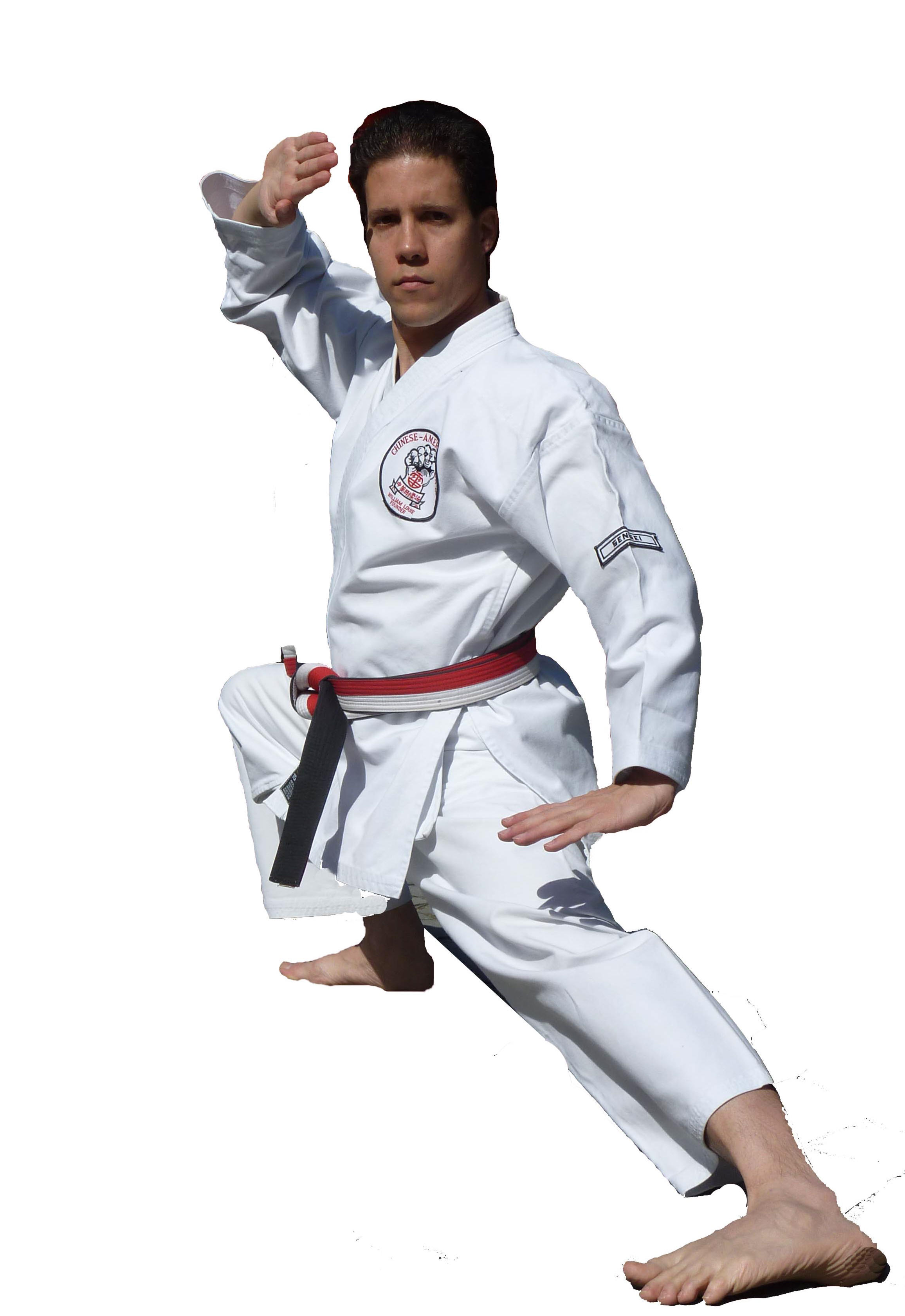
MARTIALFORCE.COM
PRESENTS
AN INTERVIEW WITH
SENSEI ELIAS BONAROS
APRIL / 2010

As Master Urban said, “Tournaments are the best excuse for
Martial Artists to socialize.”
Interview By Eddie Morales
Martialforce.com
Online Magazine
My name is Eddie Morales and welcomed to Martialforce.com Online Martial Arts Magazine. In regards to Martial Arts practitioners, there are always those unique individuals that strive to become like their teachers. They constantly practice thousands of repetitions of any given technique and study the movements of their instructor. The fact in life is that every one copy’s someone and that of course is the sincerest form of flattery. There are a few that reach the level that they desire because of constant analytical questioning and practice regarding any technique. At the end there is a smaller percentage that reach the level that their instructor envisioned and trained them for. The following individual is part of the small percentage. To listen, watch and hear him in relation to martial arts is not like a copy but instead a personification of his instructor’s teachings. This individual is Sensei Elias Bonaros who is one of Grand Master William Louie’s top black belt students. With this interview we hope to bring you into his life, practice and constant search for improvement.

Martialforce.com: Where were you born and what city did you grow up in?
SENSEI BONAROS: I was born in Flushing, New York and grew up in Bayside, NY.
Martialforce.com: What is your occupation?
SENSEI BONAROS: I am a Medical Doctor (MD) with a specialty in Cardiology. My practice is located in New Hyde Park, New York. I perform non-invasive testing in our office consisting of echocardiograms, carotid dopplers and nuclear stress tests. I am also involved in cardiac patient care both outpatient and in the hospital.

Martialforce.com: What got you interested in studying the martial arts and when did you begin?
SENSEI BONAROS: As a child of the 1970’s and 1980’s, I was heavily influenced by the Bruce Lee and Ninja craze that ensued during this time period. I watched many Saturday afternoon Kung Fu movies and emulated the techniques. One day, my brother Van began training under Shihan William Louie at the Queens Nautilus gym in Fresh Meadows, New York. He would constantly show me different moves he was learning and demonstrated the Sanchin kata from beginning to end. I was captivated by the powerful movements and decided to take a class. I have been training ever since. That was in September 1987.

GRAND MASTER WILLIAM LOUIE IN CENTER AND BONAROS TO RIGHT AS WHITE BELT.

Martialforce.com: Can you tell our readers a little about your instructor?
SENSEI BONAROS: Shihan William Louie is the founder and head instructor of the Chinese American Goju Ryu system. The basis of our style is Master Peter Urban’s USA GoJu. Shihan Louie has also trained in many other styles including Southern Praying Mantis, White Crane, Hung gar, Tiger Claw, Judo, Ju Jitsu and Shotokan. He introduced various elements of these styles that he felt were most effective and enhanced the overall curriculum. He is a very traditional teacher and emphasizes kata and self-defense training. Additionally, we practice kumite in a sport and realistic settings.


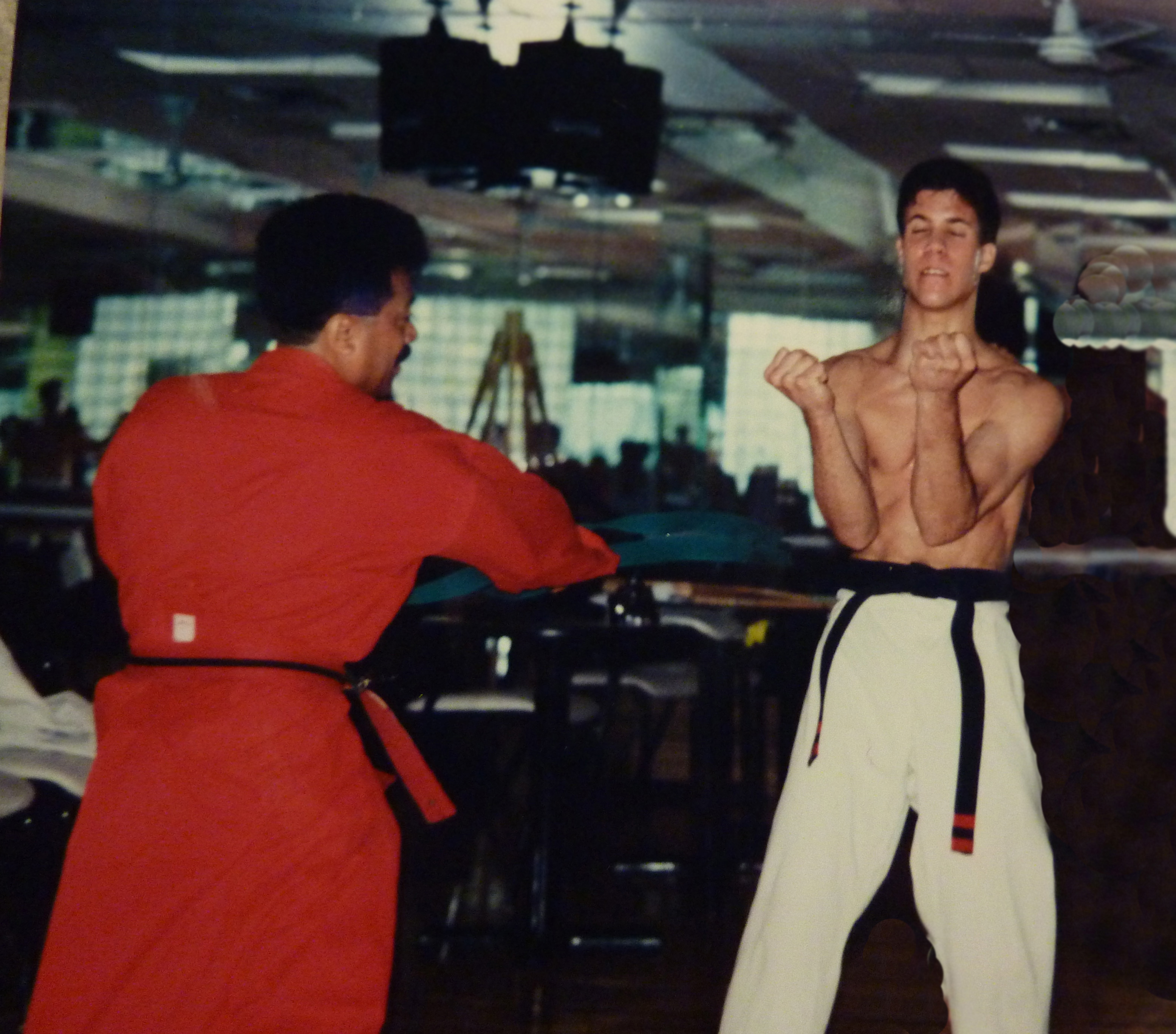
SANCHIN KATA PRACTICE
Martialforce.com: What are your thoughts on the importance of tournaments competition and do you compete?
SENSEI BONAROS: As Master Urban said, “Tournaments are the best excuse for martial artists to socialize.” I enjoy tournament competition and always learn a lot from them. They provide a chance to meet other competitors and instructors from various schools and styles other than your own. It forces you to perform at your peak and to perfect your form and technique. It serves as a forum for self-improvement. It was a great honor to place first in the World Goju tournament 4th and 5th Dan division kata competition in 2008.

Martialforce.com: In this day and age of mixed Martial Arts, do you think Kata (Pre-arrange set of movements) has any importance in the practice of Martial Arts?
SENSEI BONAROS: Kata has a very important place in martial arts practice. A lot of the techniques that one learns from kata training cannot be performed in mixed martial arts competitions, such as eye strikes for example. The moves were designed to completely incapacitate an opponent and not for victory in a match. Additionally, as we get older, one cannot compete in mixed martial arts. One can still perform kata well into their 90’s. As Shihan Louie once said, “Kata is the encyclopedia of our style”.
Martialforce.com: What is one of your favorite Kata’s and why?


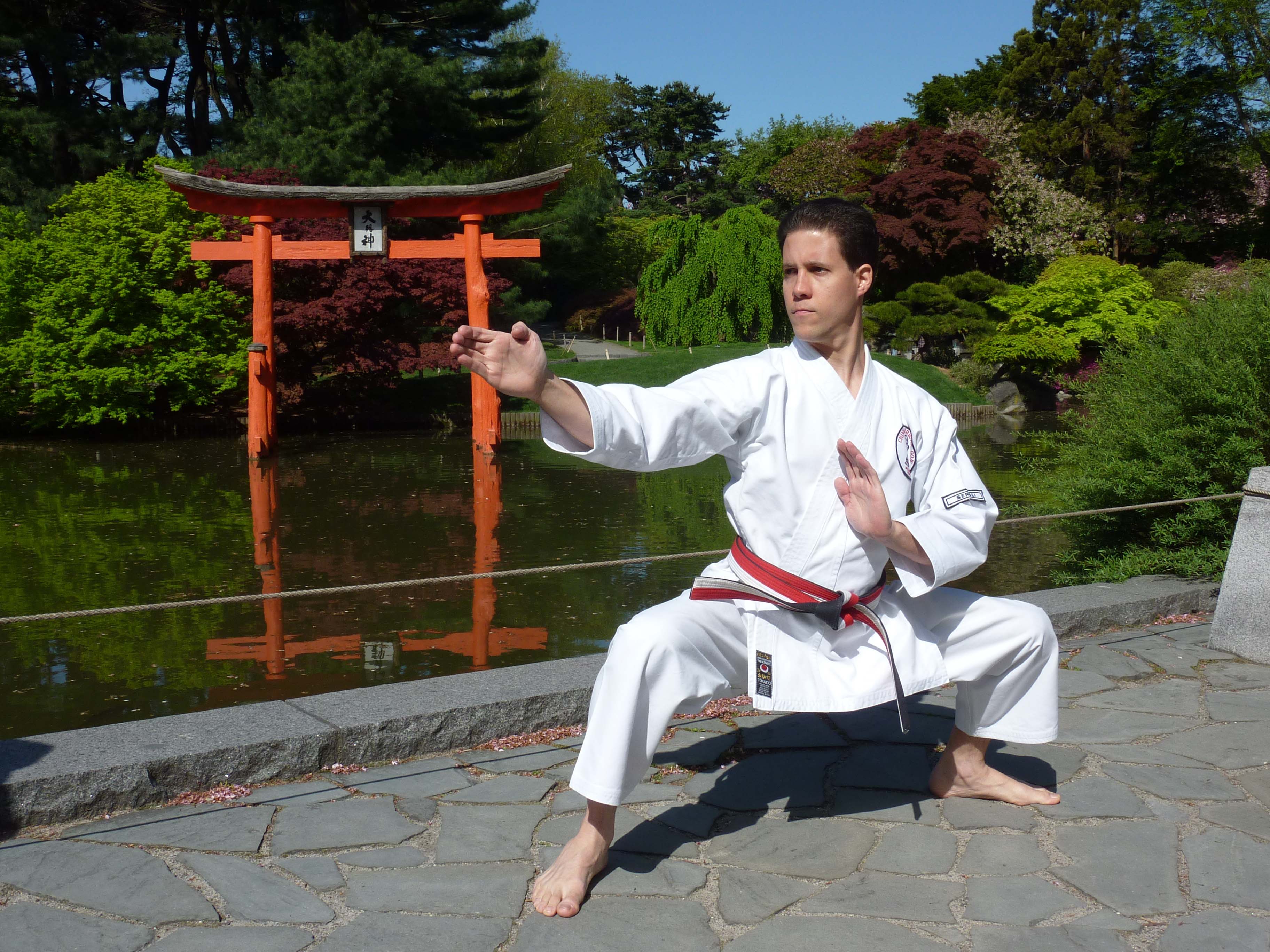
SEIPAI KATA
SENSEI BONAROS: My favorite kata is Seipai. “18 hands”, as the translation reads, was taught to Kanryo Higashionna by Ryu Ryu Ko. To move in the footsteps of a long line of masters is always humbling. The bunkai and setsumei vary from quick single strikes and combination hitting to complex grappling maneuvers. There are many unique strikes and hand articulations that epitomize the very nature of Goju karate. I also enjoy the aesthetic appearance of the sequence of techniques that compose this kata.
Martialforce.com: Do you practice (Kobudo) weapons in your system and do you feel it is necessary?
SENSEI BONAROS: We do practice Kobudo (Weaponry) in our system. We have kata with the Bo, Sai and Nunchaku. We also practice two men weapon sets. I believe weapon training is very important to the development of a Karateka. Weapons serve as an extension of the empty hand. They build strength, dexterity and coordination. A lot of Kobudo can be applied to real world situations. Should one be attacked, a broomstick or tree branch may serve as a life saving implement in well-trained hands.

Martialforce.com: You mentioned two man set, what importance does this have in training?
SENSEI BONAROS: Two man sets, or two man forms are choreographed fighting sequences performed between two people. In the Chinese American Goju Ryu we have Two Man Form 1,2 and 3, Bo vs. Bo and Bo vs. two Jo sticks. Additionally, one can learn the Five Star, a two-man set from the Southern Praying Mantis system. These are usually reserved for Yudansha level practitioners. I have been fortunate enough to have been taught both sides of the aforementioned sequences. Each two-man form builds on the complexity of techniques and fluidity of motion. Unlike solo kata performance, a two-man form illustrates the application of every move. It forces you to have excellent form and control as your partner depends on your skill and accuracy to avoid injury. Timing and distancing are of utmost importance during the execution of a two-man set. The higher forms rely heavily on openhanded techniques being utilized for both blocking and striking maneuvers. The last of the two man sets, #3, occurs almost entirely in a close range. Here forearm and hand sensitivity plays an important role. These are skills that are difficult, if not entirely impossible, to develop and hone alone.
Two man sets are very applicable to free fighting. Although they are choreographed, you are still experiencing the real feeling of a live opponent. No execution of a two man set is the same as each partner moves differently. They teach a feeling for actual combat with different heights and body shape morphologies. One can also routinely practice and apply a multitude of advanced open hand strikes, blocking, sweeping, and trapping combinations.

SENSEI BONAROS ASSISTED BY SHODAN JOSEPH BALLARD
Martialforce.com: From our prior conversation, I can sense that you are in constant search of improvement. My question is. Do you think there is a point where enough is enough and does the search ends?
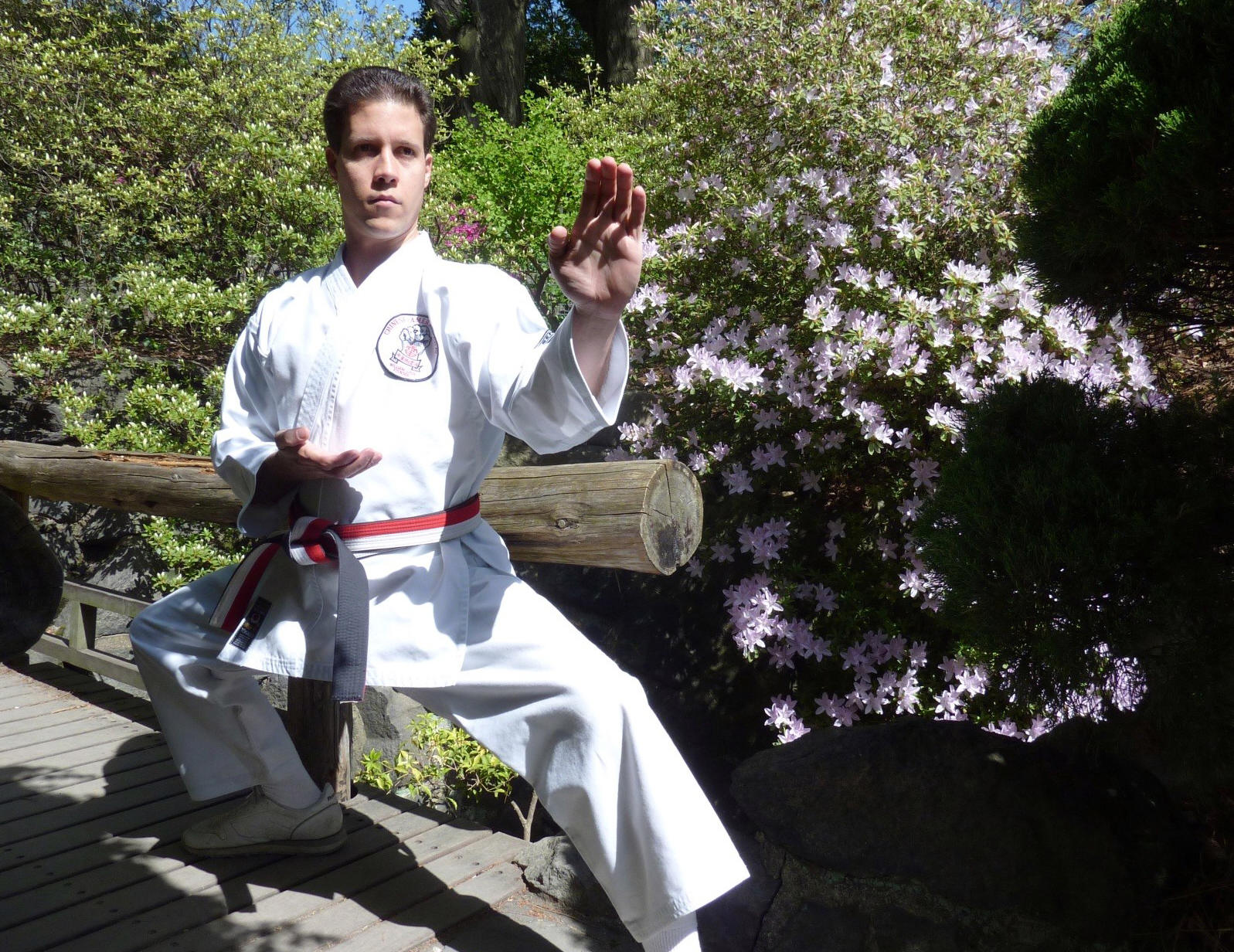
SENSEI BONAROS: After 22 years in the martial arts, it becomes more and more evident that the “way” (Do) aspect never ends. Every class or training session, every kata performance, every kumite match provides additional insight into concepts of kinesiology, strategy and human psychology that was not apparent before. The search is never ending. It is not the end, but the journey one must appreciate.
Martialforce.com: You are fortunate enough to have studied with a well-respected and extremely knowledgeable instructor (Grand Master William Louie). My question is, do you feel like you made the right choice in your choice of instructor and why?
SENSEI BONAROS: Absolutely. Shihan William Louie has embodied many attributes of a superior martial artist. He maintains the traditional training and techniques of the old masters. He has an inspirational way of teaching and is able to push you time and time again to achieve the impossible.
Martialforce.com: Do you practice any Kata or techniques that you learned outside of Chinese American Gojuryu?
SENSEI BONAROS: Although Chinese American Goju is my main style, I have had the opportunity to enhance my martial education by studying different systems. In college at St John’s University, I trained for 4 years in Ji Do Kwon Tae Kwon Do under Grandmaster S. Henry Cho. At the same time, I practiced for 1 year in Judo and Jiu Jitsu under Sensei Kiyoshi Shiina. Michael Montalto, a student of Surachai Sirisute taught Muay Thai to me at his home for 2 years and I furthered my experience in this discipline for 4 additional years while away in medical school at Wisconsin under the tutelage of Jeff “Duke” Roufus. I also had the privilege to train with Hanshi Steven Malanoski for about 6 months in Omori Ryu Iaido. Lastly, I have researched and learned the Okinawan version of Suparinpei from the video tapes and manuals authored by Hanshi Morio Higaonna.
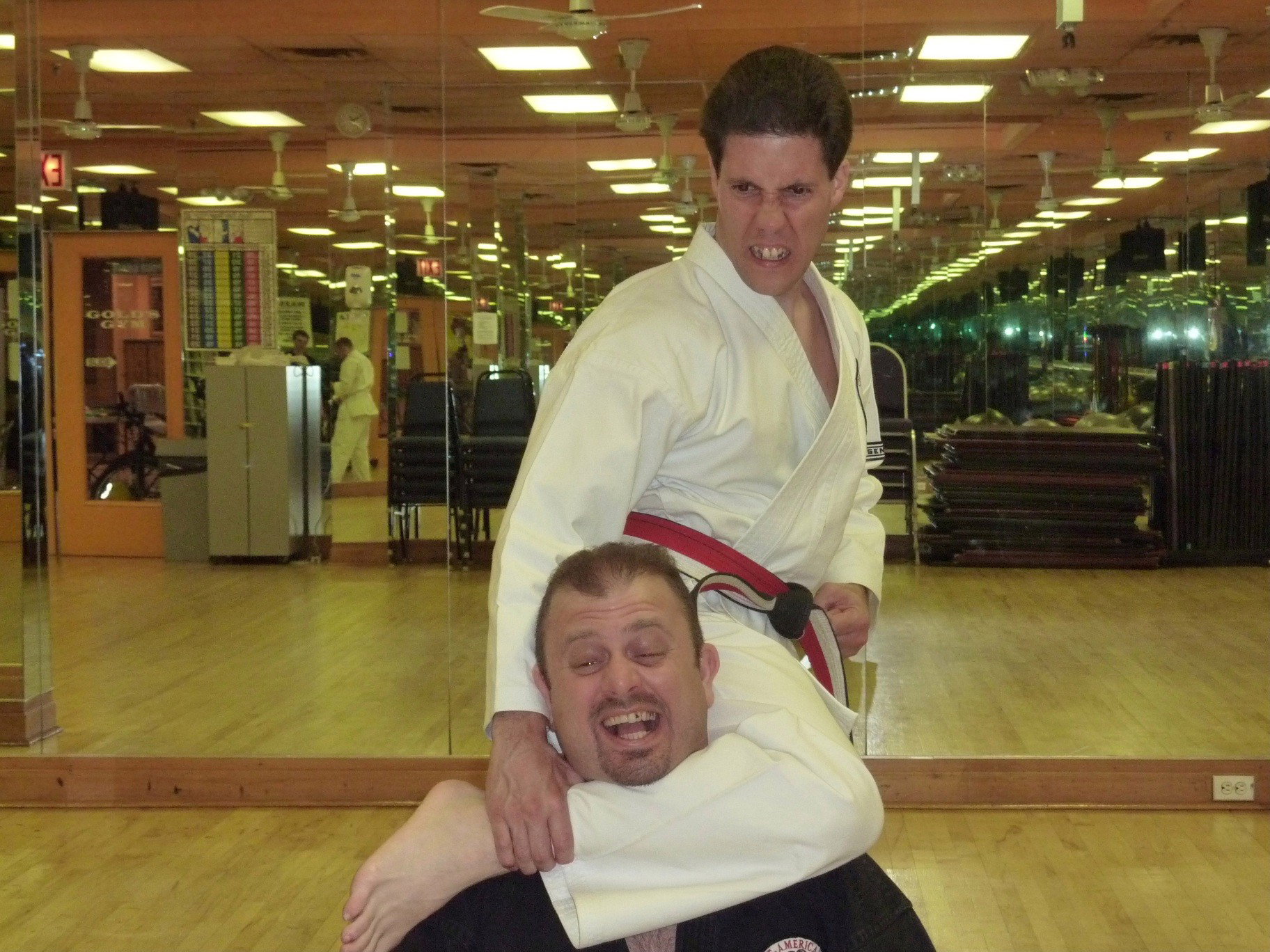
SENSEI BONAROS ASSISTED BY NIDAN STEPHEN TROST
Martialforce.com: I have been to seminars where the person teaching the kata did not teach the application but merely the movements. Do you think that instructors should teach the application of techniques in kata and why?
SENSEI BONAROS: I am strongly in favor of learning the applications of kata techniques. Without a firm understanding of the applicability of kata maneuvers, we are merely practicing a dance. Knowing a kata without understanding the applications is like owning a dictionary where each page lists word after word without definitions. Early in training, I believe it is acceptable to teach the movements first, and later layer in the applications as newer students may be overwhelmed by too much initial information.
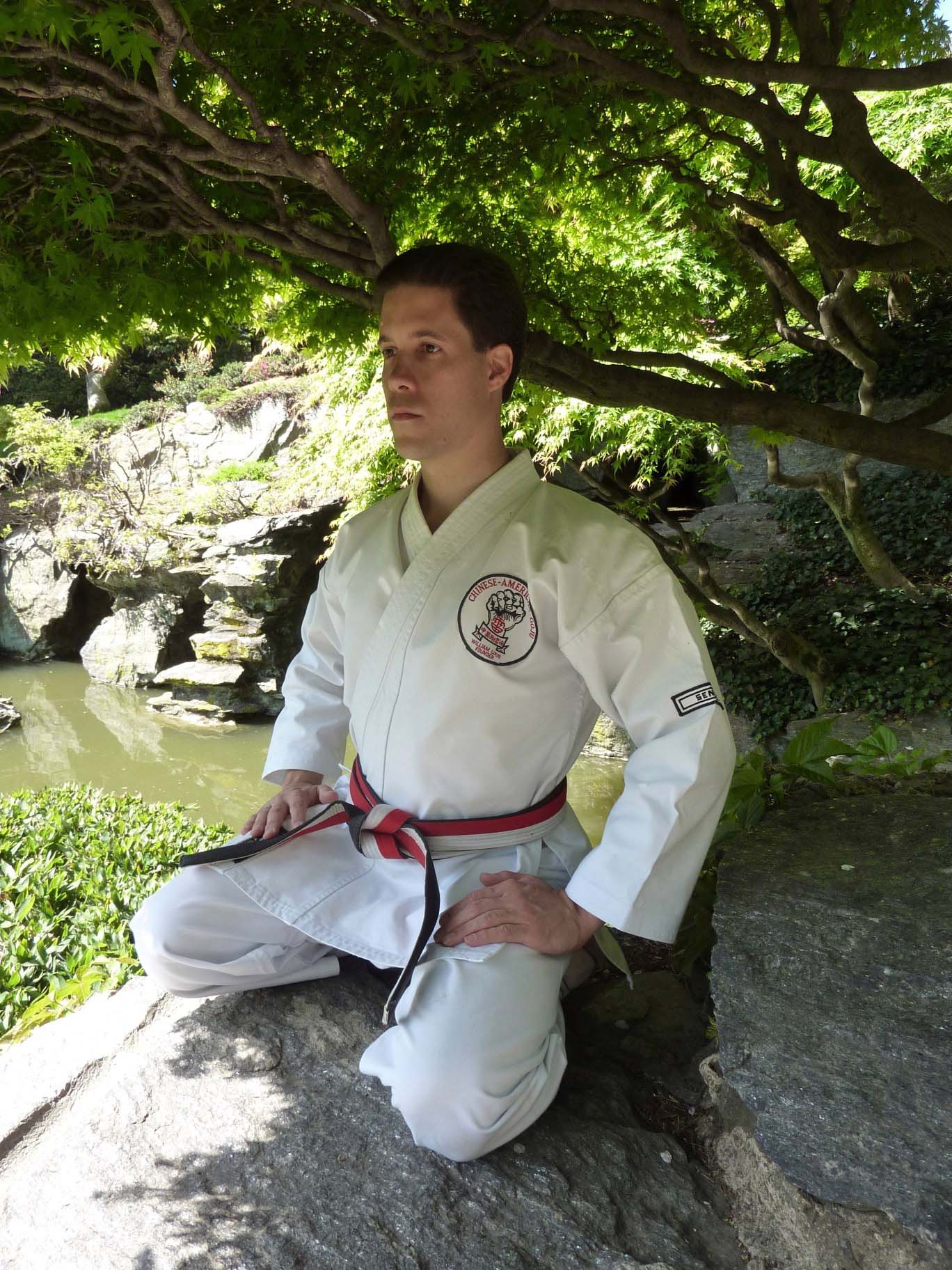
Martialforce.com: Can you tell our readers about a time when you’re training felt as if it made a difference in your life?
SENSEI BONAROS: In my training as a cardiac fellow, the focus and calmness of mind that the martial arts instills in a practitioner allowed me to handle many situations in which multiple simultaneous emergencies where occurring. Additionally, I was able to strongly pass four cardiology specialty board exams in the first year after the completion of my fellowship. I was the first graduate from my fellowship to accomplish this task. This victory can be attributed to the mindset of “Nothing is Impossible”. Also thanks to the confidence and command presence that the martial art instills in a karate Sensei, I have been able to resolve many potential altercations utilizing the “art of fighting without fighting”.
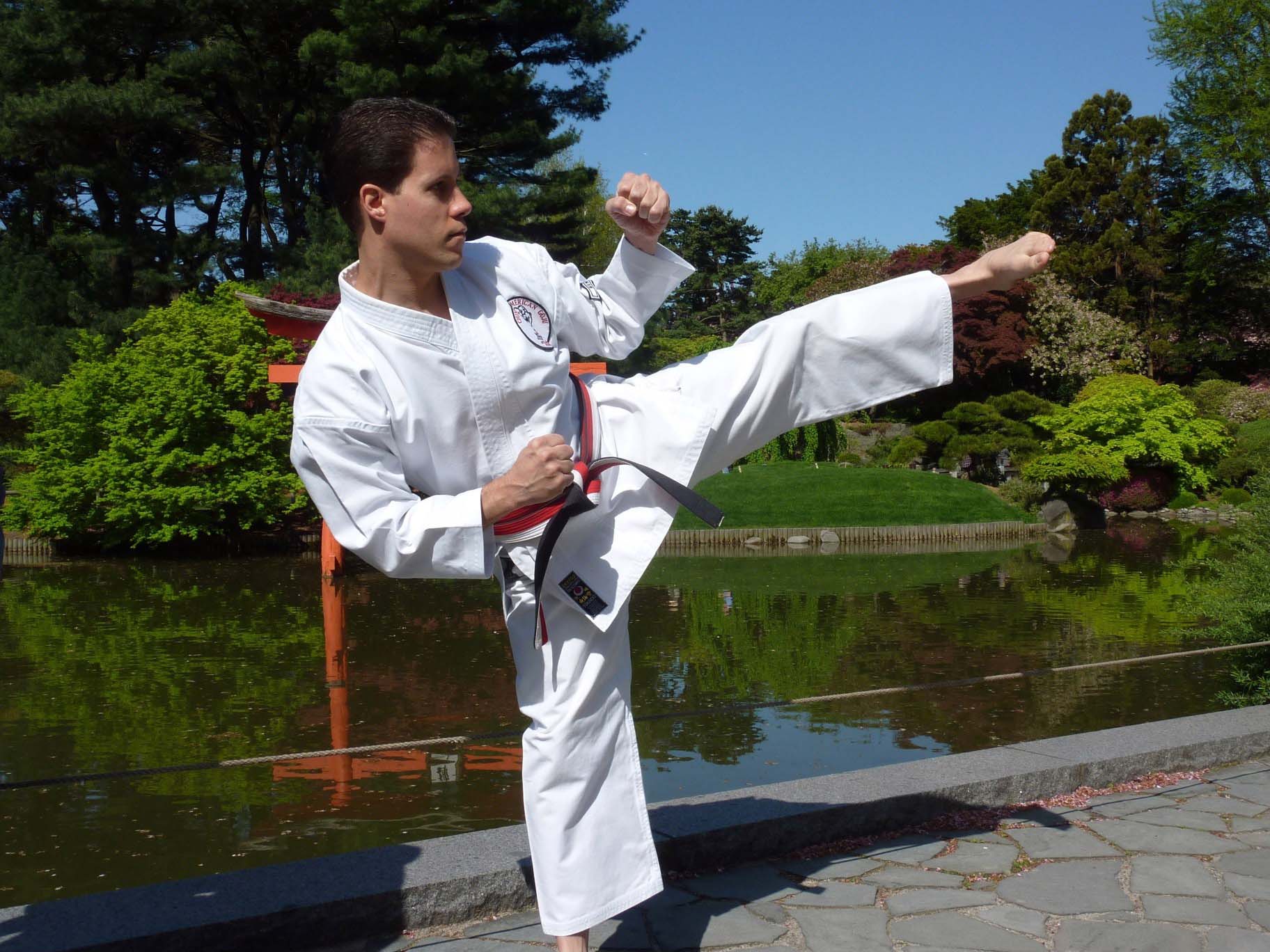
Martialforce.com: This is an age-old question but the response of course varies. Where do you see yourself in ten years in regards to your training and life in general?
SENSEI BONAROS: In ten years, I visualize myself maintaining and enhancing my present level of physical fitness. I see myself perfecting my katas and dissecting the applications to an even higher level. I look to sharpen my kumite (Fighting) skills as well. I aspire to gain a greater understanding of the “zone” phenomenon. It is also a dream of mine in the next ten years to make a trip to Asia and see karate practiced at its point of origin: Okinawa. Lastly, in 10 years, I foresee myself being married and hopefully being fortunate to bring forth a healthy child or children that will allow me to pass on my martial art knowledge.
Martialforce.com: Do you have any words for someone who is interested in studying Martial arts but is unsure?
SENSEI BONAROS: My advice is simple and straightforward. Just do it. We only live once, and if there is any aspiration to be a martial artist, then start training. Knowledge of the arts is a gift that truly keeps on giving. Strength, flexibility, endurance and a strong positive mental attitude are attributes that can be easily reaped by any martial art devotee!

Martialforce.com: What are some of the differences if any that you have seen in Karate training the past twenty years?
SENSEI BONAROS: I have seen karate become more hybridized as time goes on. Many are trying to abandon traditional approaches in order to embrace a “ mixed martial arts” concept. In other dojos, emphasis on kumite has been diminished somewhat as legal ramifications have reared there ugly heads. On the positive side, it appears many martial artists are enhancing their repertoires with the tremendous wealth of knowledge available now. One can click on an Internet video in seconds and see a karate grandmaster perform kata in Okinawa, watch a kumite tournament in Tokyo, or even watch Hanshi Gogen Yamaguchi train under an icy waterfall! Tons of previously lost historic footage is now widely available. Also I have seen karate books become more technical whereas twenty years ago they were more pictorially oriented with far less explanatory text.
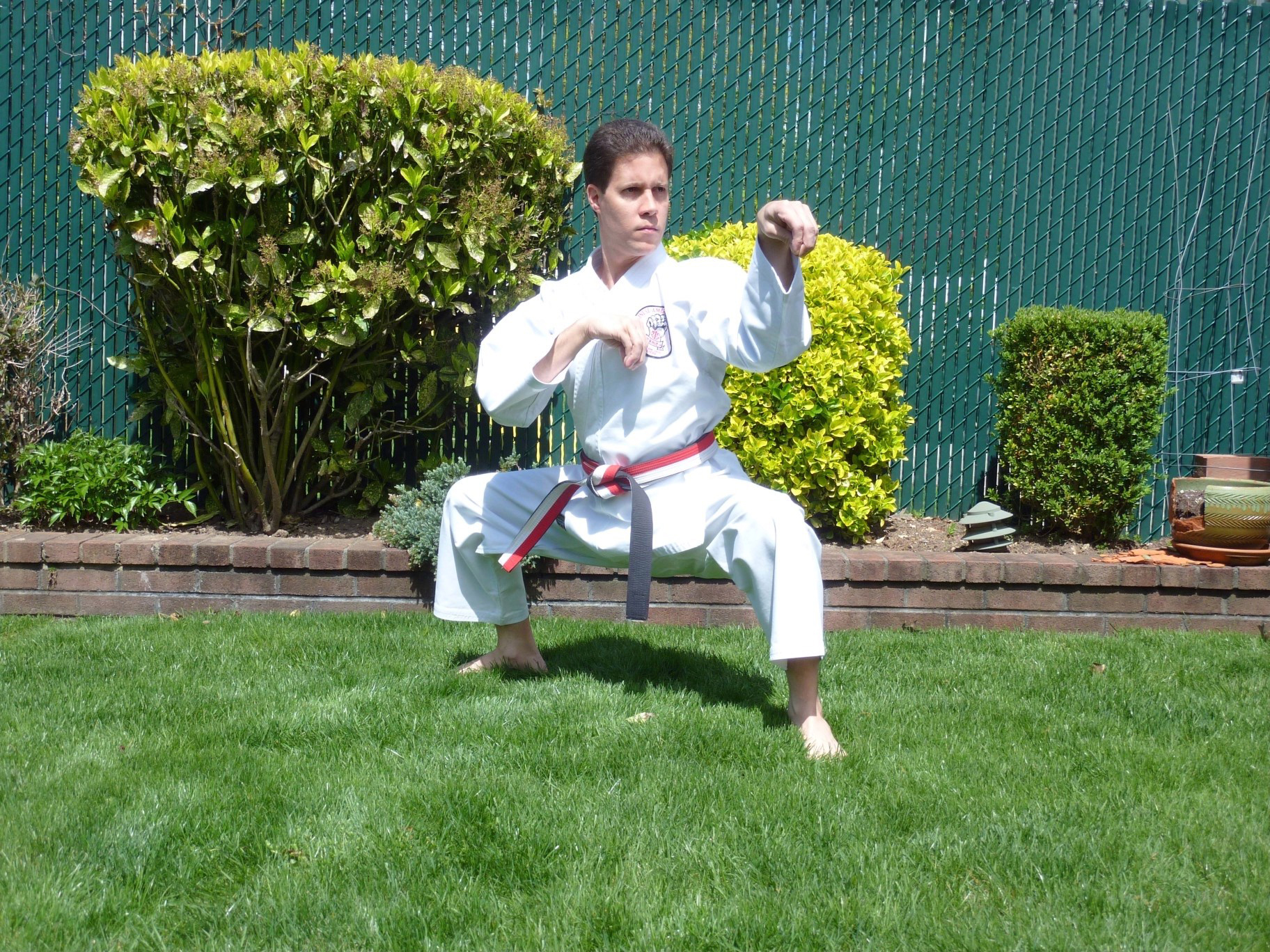
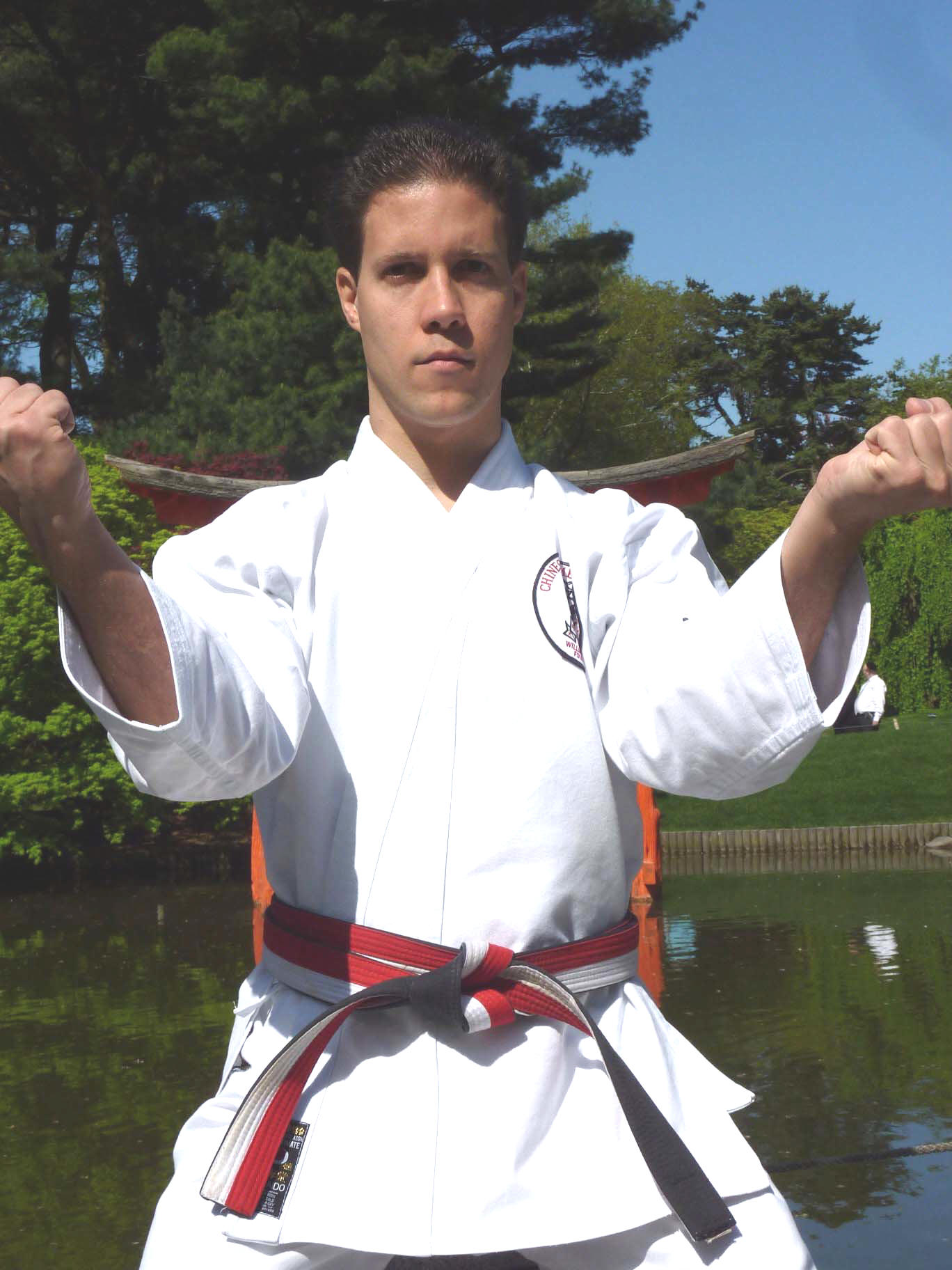

KATA PRACTICE IN THE SNOW
Martialforce.com: What is your opinion on rank and its value if any, in the martial arts?
SENSEI BONAROS: Rank may serve as milestones for ones training, but it should never be an end in itself. It is the journey one should truly appreciate. I have personally used rank to allow me to focus on the required techniques for the purpose of passing various examinations. On the first day after earning my new rank, I would begin my study of the new katas and kihon required for advancement. In this way, the ranking system helped to break down the overwhelming knowledge base that a martial arts system entails into easily digested, bite sized chunks.
Martialforce.com: How old do you think a person should be to wear the rank of black belt and why?
SENSEI BONAROS: As my teacher Shihan William Louie has stated and lived by, one should be at least 16 years old. A black belt carries with it certain responsibilities and expectations. A 5 year black belt cannot possibly have the strength, maturity or knowledge base that one would expect with this rank. Additionally, it can create a sense of over confidence that can result in negative consequences.
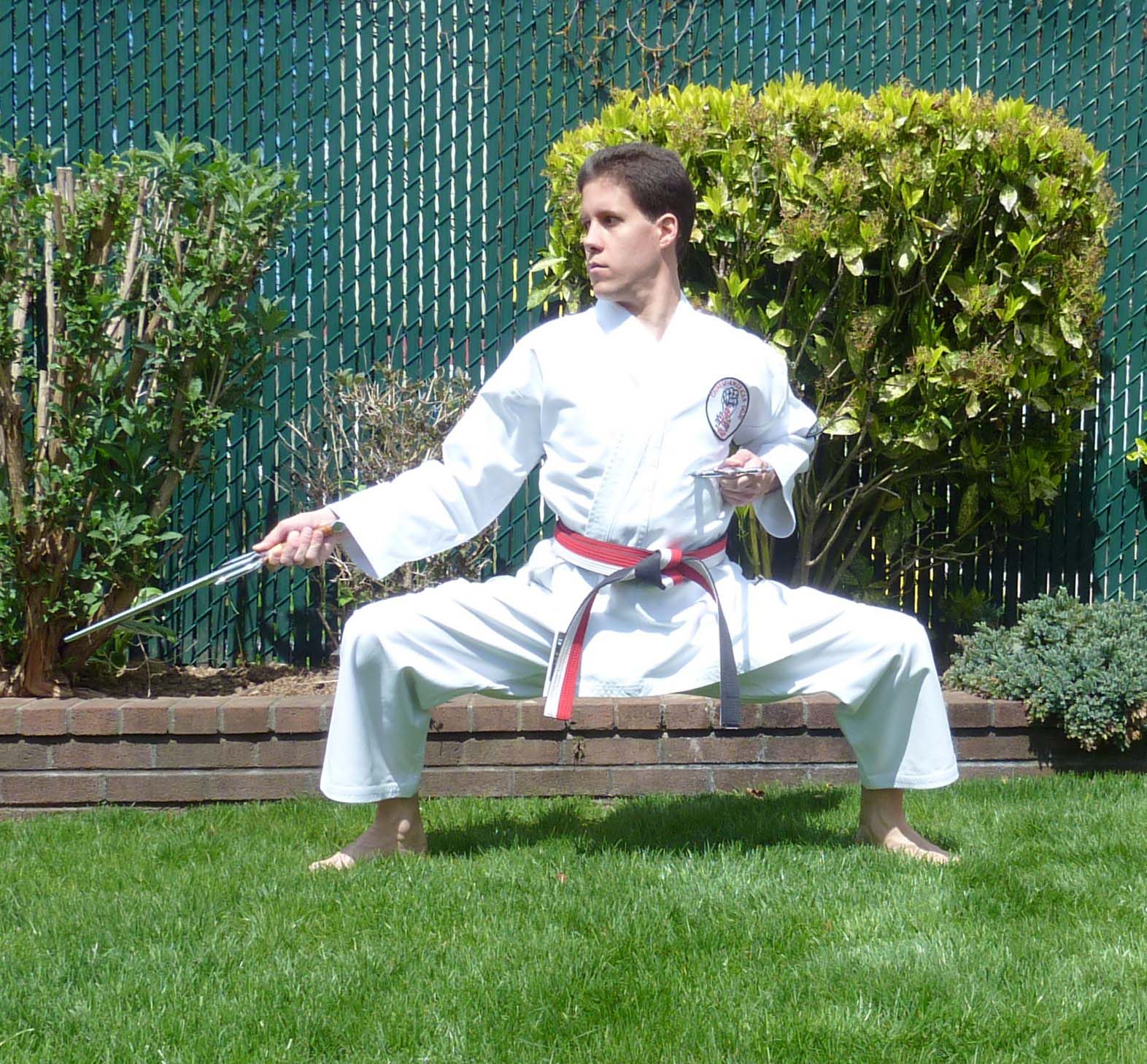
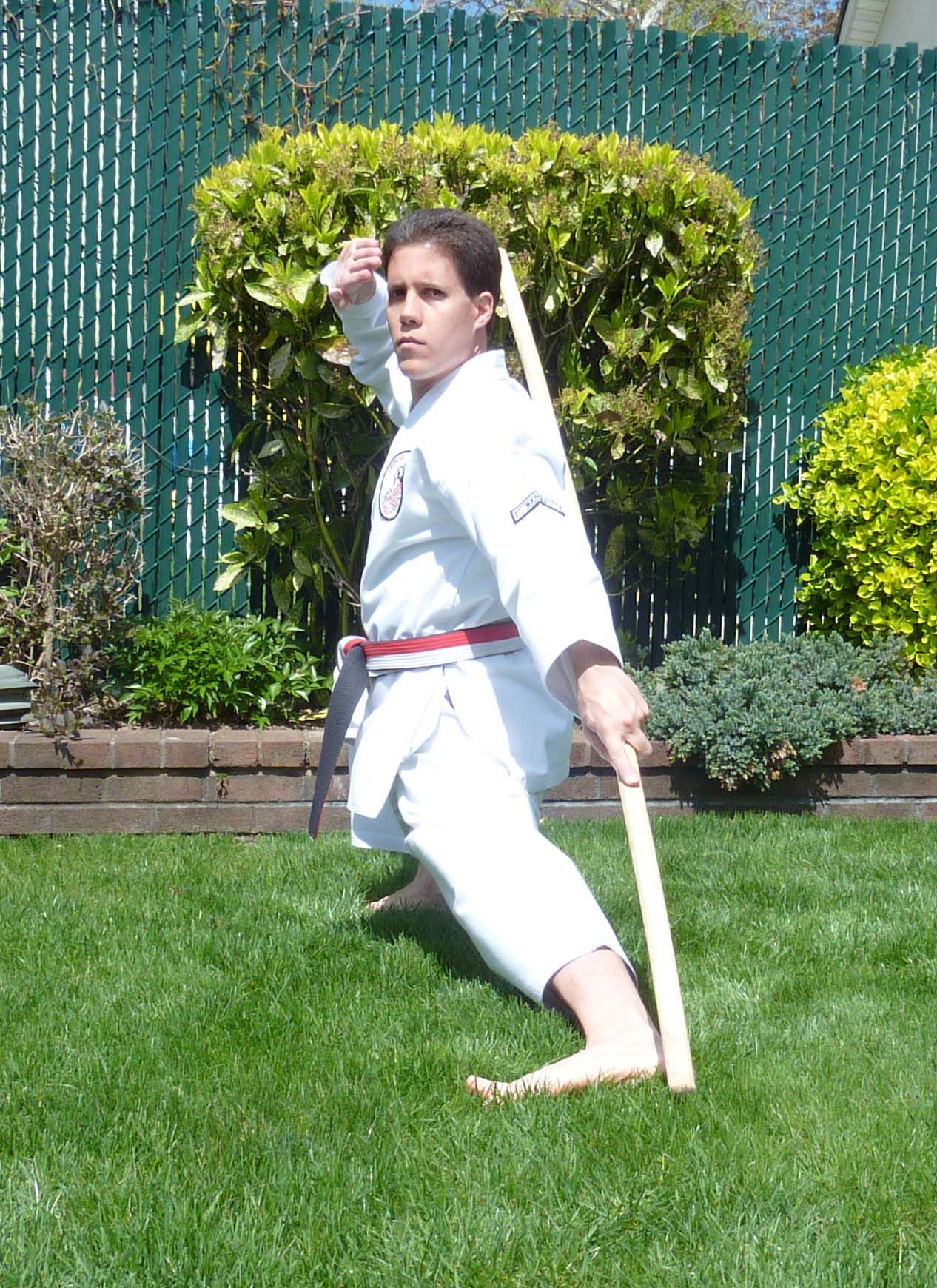
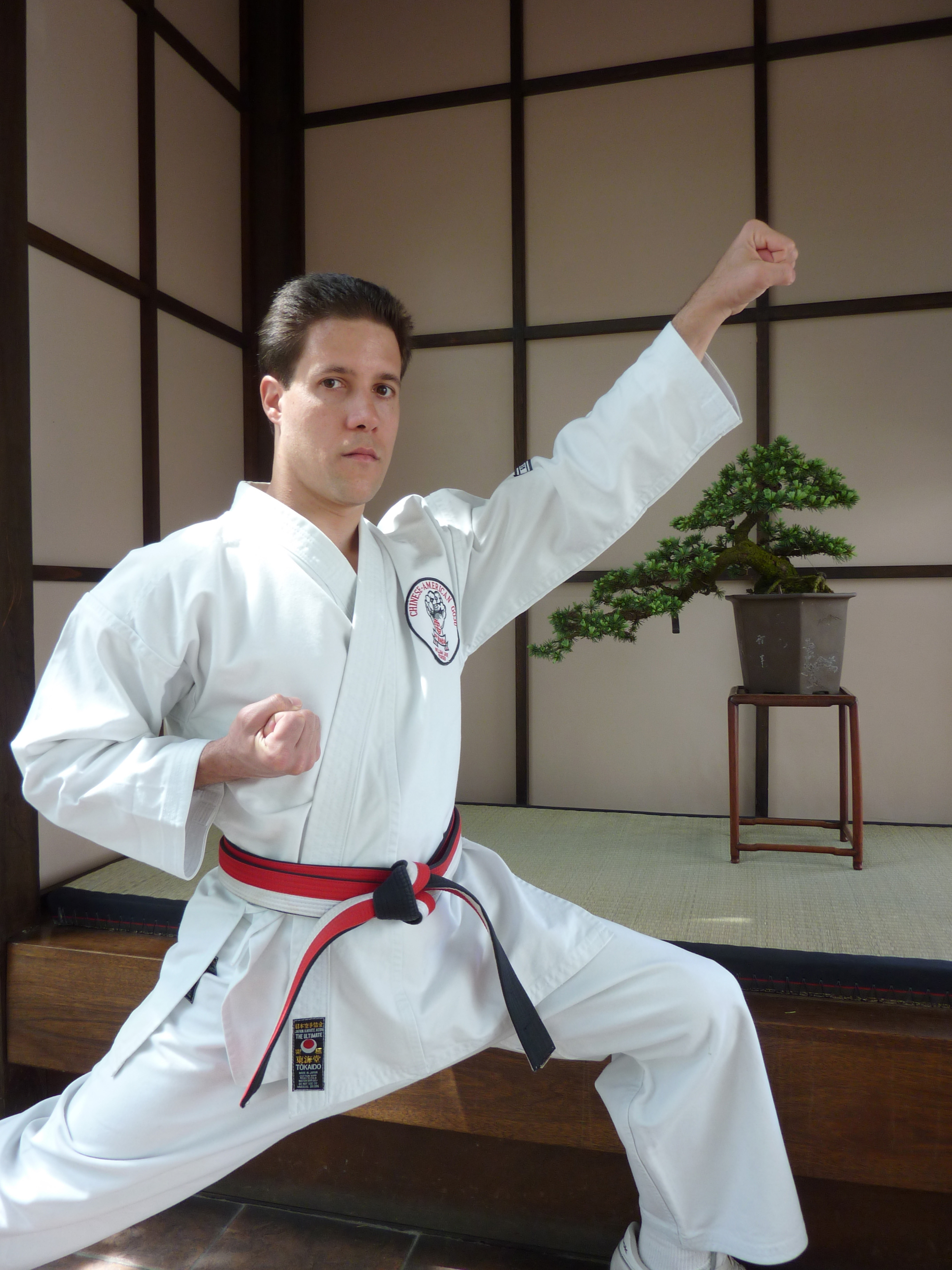
Martialforce.com: What is the location of the school where you currently train and is your instructor Master William Louie actively teaching at this location?

SENSEI BONAROS: The location is Howard Beach, NY. Here is the address:
Gold's Gym
157-05 Cross Bay Blvd
Howard Beach, NY 11414
Master William Louie currently teaches the Advanced Class on Friday nights 7:30pm to 8:30pm.
Main page of Gold's
http://www.goldsgym.com/gyms/index.php?gymID=0204
Website of Gold's Gym with schedule of classes. Karate is included here.
http://www.goldsgym.com/gyms/calendar.php?gymID=0204
Martialforce.com: Thank you for this informative interview and we at Martialforce.com wish you success.

SENSEI BONAROS: Thank you, it was an honor to be chosen for this interview.
PHOTO CREDITS:
Elias P. Bonaros Sr. for Photos in backyard
Alena Zakinova for Photos in the Brooklyn Botanical Garden
Philip Aaron for Bonsai photos
Crystal Pan for Dojo photos
PARTICIPANTS IN ACTION PHOTOGRAPHS:
JOSEPH BALLARD
STEPHEN TROST
To Martialforce.com
